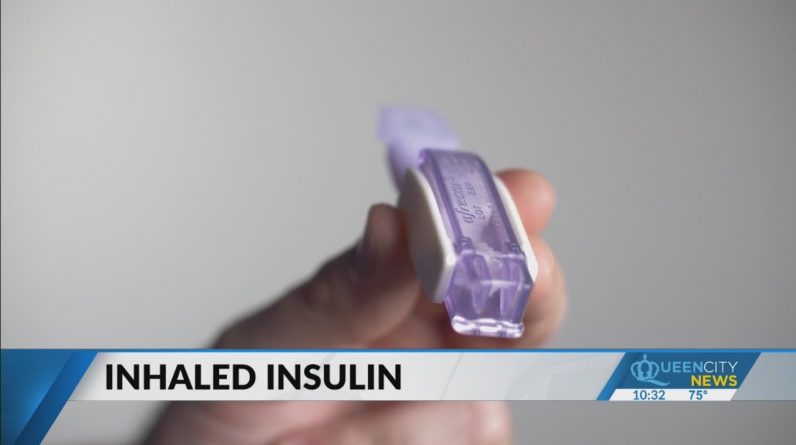Dr. David Baidal, Assistant Profess of Medicine at the DRI, discusses the islet transplantation program, the POSEIDON and other clinical trials, and his work to test novel therapies for new onset of type 1 diabetes.
Type 1 diabetes can hit you very quickly and, in many cases, you may only have a week or two to figure out what is going wrong before you are in real trouble.
MASSIVE WEIGHT LOSS not weight gain, is one of the Symptoms of Type 1 Diabetes. This is caused by ketoacidosis which is caused by your liver freaking out. Your liver and nervous system have a very close symbiotic relationship, and in Type 1 diabetes your body is full of food, but your cells are starving to death because there isn’t any insulin to help them find their food in the blood.
Your nervous system alerts your liver that your nerve cells are starving to death, the liver then freaks out and releases ketones to drain all the fat in your fat cells to be converted by the liver into sugar. But the liver doesn’t realize it is not a sugar level problem, but an insulin problem. So, your blood sugars continue to skyrocket while your fats get drained from your fat cells.
HIGH BLOOD SUGAR LEVELS will cause the blood viscosity to increase. Normally your blood is 70% water, so your blood should have the same thickness viscosity as water at normal blood sugar levels 80 to 120 mg/dl. But if it gets as high as 180mg/dl the viscosity is as high as Wesson Oil. And as the sugar levels get higher, so does your blood viscosity. This higher viscosity blood has a harder and harder time passing through the small capillary’s in your body.
This traffic jam in the capillaries causes the blood to back up and sky rocket your blood pressure, making the problem even worse. This puts a strain on capillaries in your eyes which can cause eye damage or blindness, damage to your kidneys, liver and heart as well.
The capillaries in your feet are even worse, as your body presses down hard on the capillaries there, the blood has an even harder time passing through those smashed capillaries. Therefore, diabetics are always having feet problems and, in many cases, losing their feet to gangrene or walking like their feet are very tender.
High blood sugar levels also will mean that your cells aren’t eating the sugar and are starving while gradually losing the ability to metabolize oxygen. This will manifest itself as making you very sleepy and tired, especially after eating a meal. You have a body full of food, but your cells are starving. The final stage of digestion is when your cells eat, and if your cells aren’t eating, you haven’t really eaten either. However, the solution isn’t to eat more food, but instead fix the insulin production problem.
SLEEP AND TIRED all the time.
FREQUENT URINATION about every half hour or so. Because your kidneys have detected the threat of high blood sugars and are trying to bring blood sugars back to normal healthy levels by expelling the sugars. This in turn damages the kidneys as this is not the normal function of the kidneys to dispose of food, the purpose of the kidneys is to dispose of toxins and poisons.
FIXES:
INSULIN injections is the fix but trying to determine the right level of insulin is about as tricky as trying to shoot the rapids in a sail boat. Prior to 1927 there was no insulin, and most people that got Type 1 Diabetes were going to die within a few short weeks. If not sooner. So, compared to before 1927 insulin injections looks like the cure. But it isn’t, it is only a fix.
Insulin can only be injected because it is a digestive hormone, and digestive hormones are a specialized protein-poly-peptides that communicate messages between a sugar molecule and a cell. So, if you try to eat insulin it would become destroyed in your digestive track and never make it into your blood stream as true insulin, only broken up protein molecules or as amino acids.
INSULIN PUMP is a better fix. When your pancreas is working correctly the amount of insulin is very accurately regulated. When you manually try to determine your insulin levels you either end up with too little causing blood sugars that are not low enough or too much causing a life threatening low blood sugar level.
However, as Insulin pumps become better they come with a blood sugar sensor and a built in regulated insulin pump that more accurately injects the correct amount of insulin periodically, just like your once working pancreas used to do. There is still some human controls required, but as time passes these Insulin pumps become more and more autonomous and more accurate. Be aware that these pumps can be quite expensive, but as time passes they will become more and more affordable as the technology advances.
TYPE 1 DIABETIC CURES:
ISLET TRANSPLANTATION is only done on Type 1 Diabetics that are on their death bed dying of Type 1 diabetes, which is rarely the case. Most Type 1 Diabetics do a successful job of insulin management, diet and exercise, and are therefore not a candidate for Islet Transplantation.
Islet Transplantation can take 2 different forms: (1) either transplant the pancreas from a none diabetic donor into the Diabetic’s pancreas, or (2) inject islet cells into your liver. If the Diabetic is prone to pancreatitis, then injection of islet cells into their liver is preferred. Once injected the Islet cells start to produce regulated insulin into your blood automatically.
The Bad news is, since this is an organ transplant of a foreign organ, you will probably be on immune supressants for the rest of your life. Thus, you must be willing to trade your Type 1 Diabetes in for Medically induced AIDS. The immune supressants are expensive and must be taken for the rest of your life.
Article Source: http://EzineArticles.com/9994613







